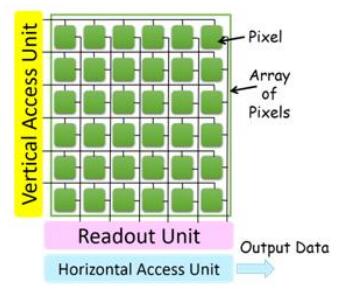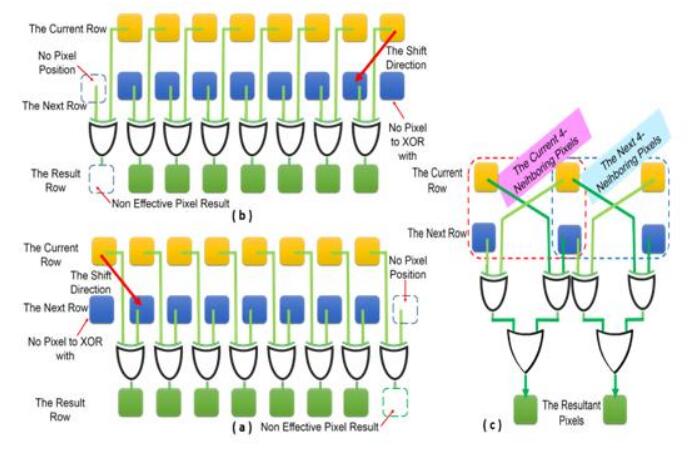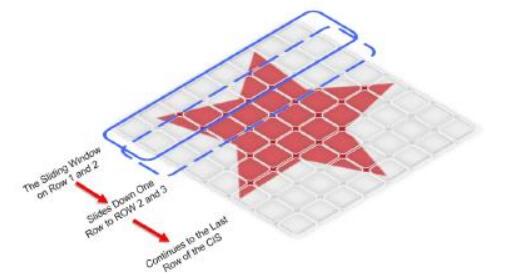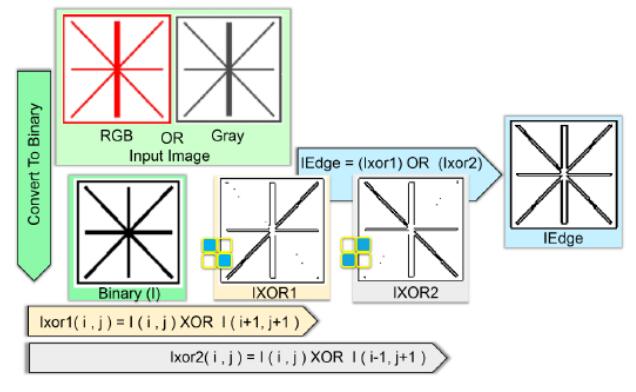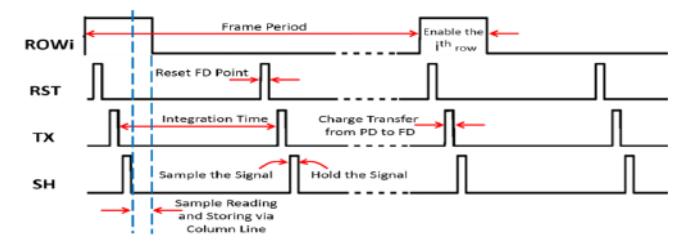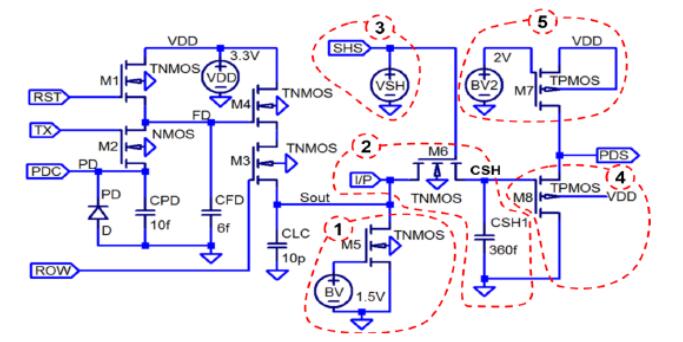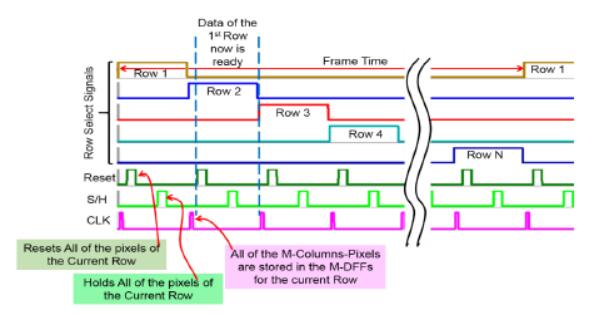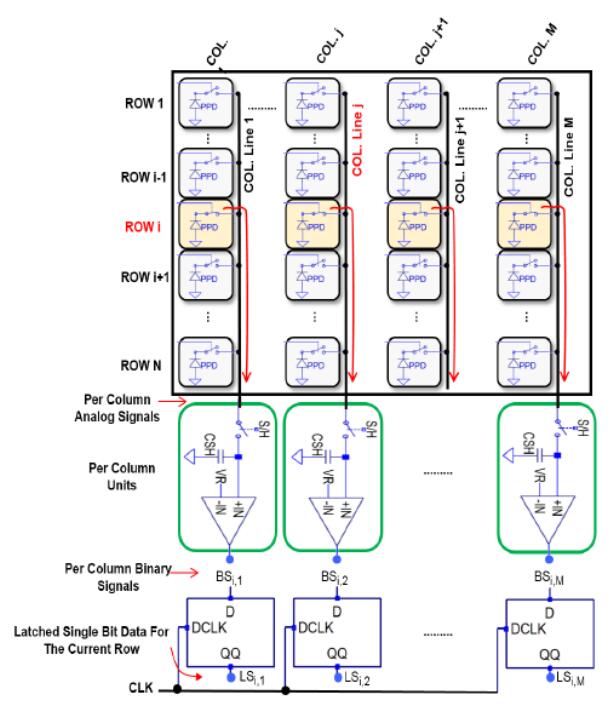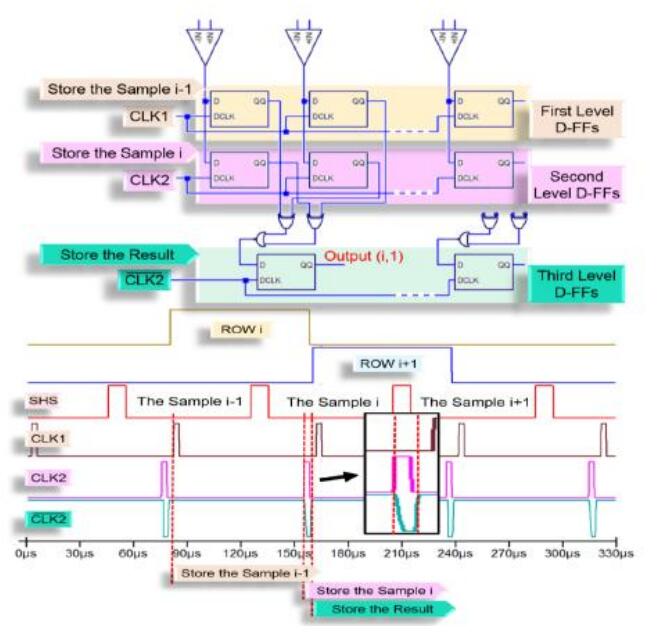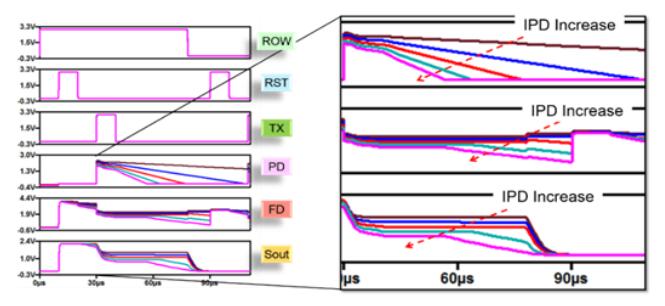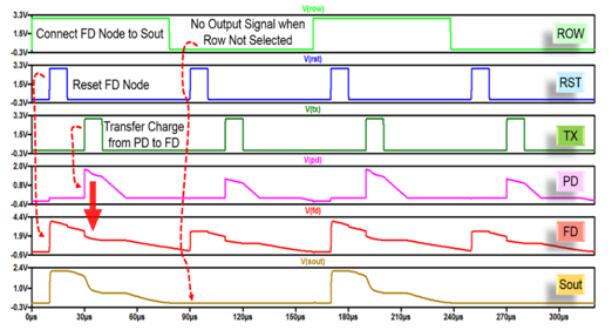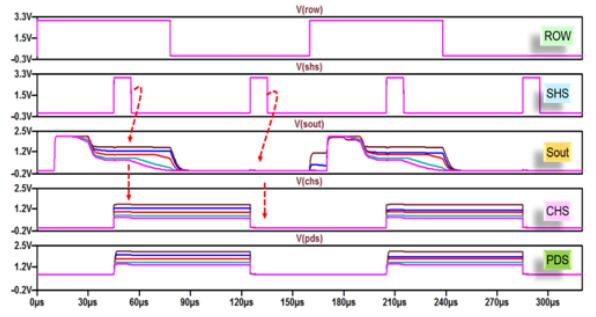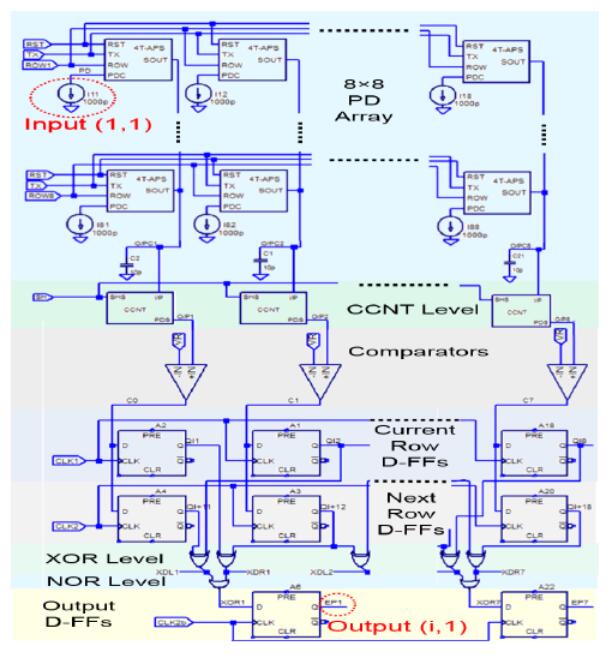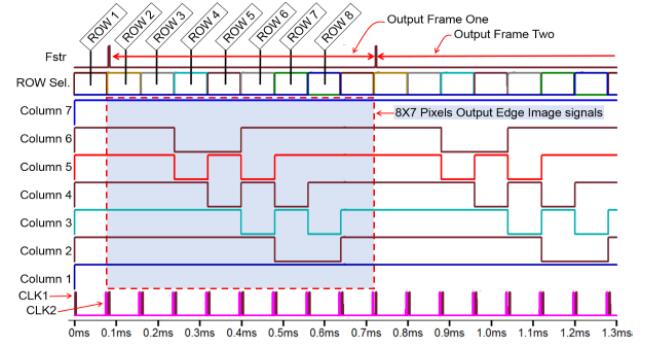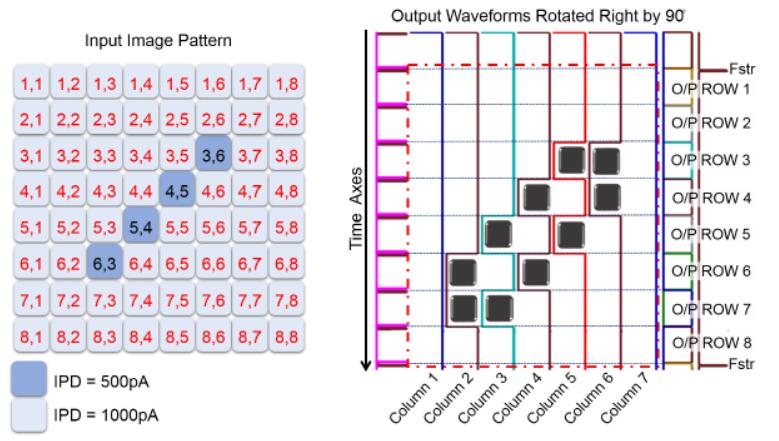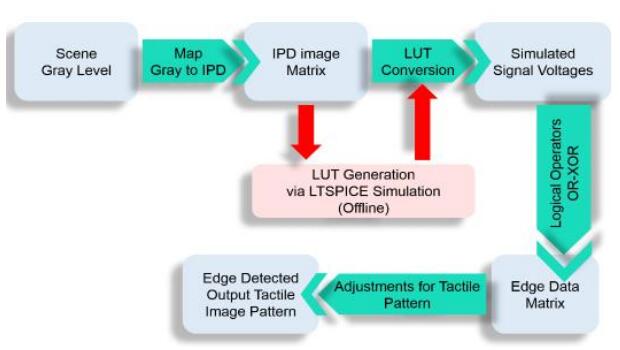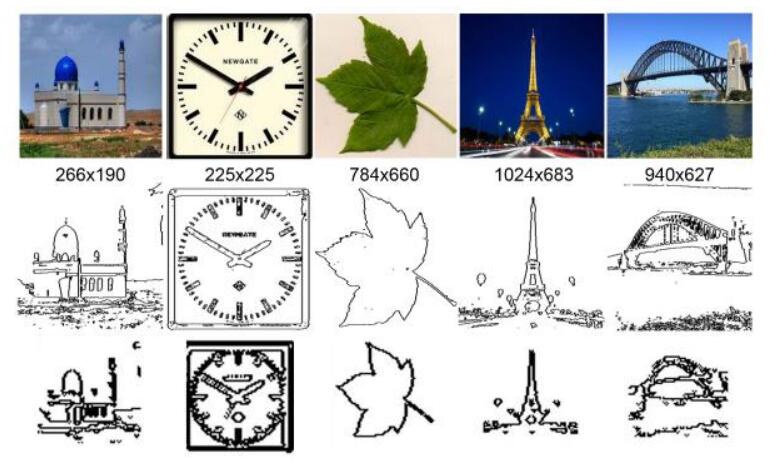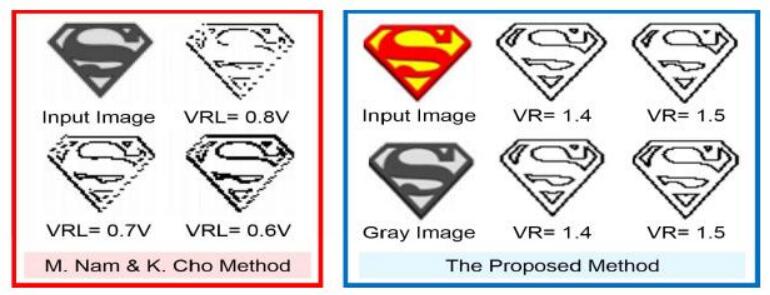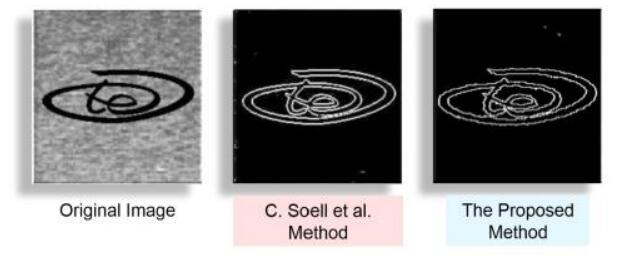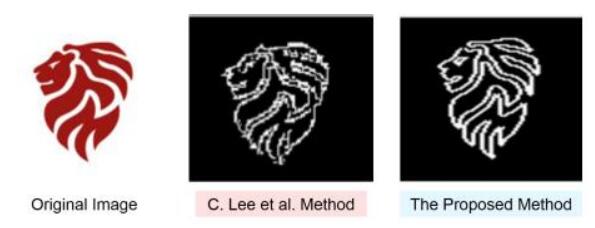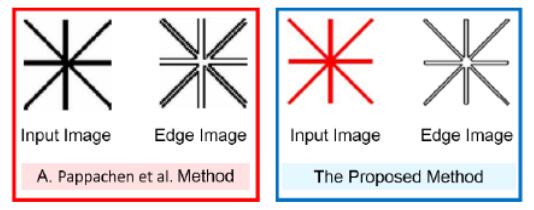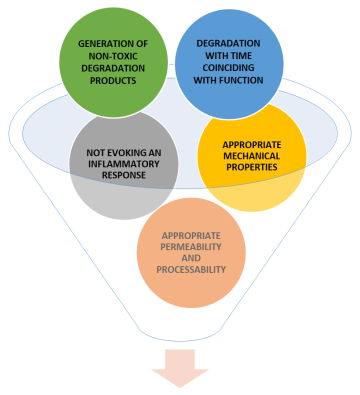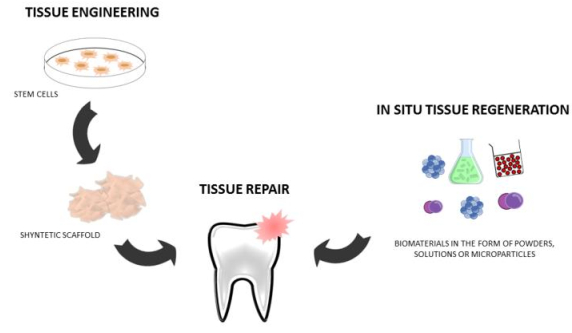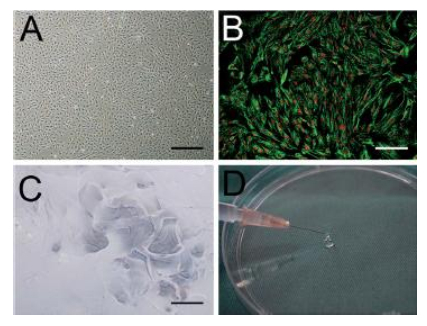|
[1]
|
Holtfreter B, Kocher T, Hoffmann T, et al. (2010) Prevalence of periodontal disease and treatment demands based on a German dental survey (DMS IV). J Clin Periodontol 37: 211–219. doi: 10.1111/j.1600-051X.2009.01517.x

|
|
[2]
|
Fujita T, Yamamoto S, Ota M, et al. (2011) Coverage of gingival recession defects using guided tissue regeneration with and without adjunctive enamel matrix derivative in a dog model. Int J Periodont Rest 31: 247–253.
|
|
[3]
|
Sun HH, Qu TJ, Zhang XH, et al. (2012) Designing biomaterials for in situ periodontal tissue regeneration. Biotechnol Progr 28: 3–20. doi: 10.1002/btpr.698

|
|
[4]
|
Lloyd AW (2002) Interfacial bioengineering to enhance surface biocompatibility. Med Device Technol 13: 18–21.
|
|
[5]
|
Schakenraad JM, Hardonk MJ, Feijen J, et al. (1990) Enzymatic activity toward poly(L-lactic acid) implants. J Biomed Mater Res 24: 529–545. doi: 10.1002/jbm.820240502

|
|
[6]
|
Finer Y, Santerre JP (2004) Salivary esterase activity and its association with the biodegradation of dental composites. J Dent Res 83: 22–26. doi: 10.1177/154405910408300105

|
|
[7]
|
Rokaya D, Srimaneepong V, Sapkota J, et al. (2018) Polymeric materials and films in dentistry: An overview. J Adv Res 14: 25–34. doi: 10.1016/j.jare.2018.05.001

|
|
[8]
|
Yuan W, Ji J, Fu J, et al. (2008) A facile method to construct hybrid multilayered films as a strong and multifunctional antibacterial coating. J Biomed Mater Res B 85: 556–563.
|
|
[9]
|
Travan A, Marsich E, Donati I, et al. (2011) Silver–polysaccharide nanocomposite antimicrobial coatings for methacrylic thermosets. Acta Biomater 7: 337–346. doi: 10.1016/j.actbio.2010.07.024

|
|
[10]
|
Mironov V, Visconti RP, Markwald RR (2004) What is regenerative medicine? Emergence of applied stem cell and developmental biology. Expert Opin Biol Th 4: 773–781.
|
|
[11]
|
Rajeswari R, Clarisse CHN, Susan L, et al. (2012) Biomimetic surface modification of titanium surfaces for early cell capture by advanced electrospinning. Biomed Mater 7: 015001. doi: 10.1088/1748-6041/7/1/015001

|
|
[12]
|
Riccitiello F, De Luise A, Conte R, et al. (2018) Effect of resveratrol release kinetic from electrospun nanofibers on osteoblast and osteoclast differentiation. Eur Polym J 99: 289–297. doi: 10.1016/j.eurpolymj.2017.12.035

|
|
[13]
|
Coulembier O, Degée P, Hedrick JL, et al. (2006) From controlled ring-opening polymerization to biodegradable aliphatic polyester: Especially poly(β-malic acid) derivatives. Prog Polym Sci 31: 723–747. doi: 10.1016/j.progpolymsci.2006.08.004

|
|
[14]
|
Maurus PB, Kaeding CC (2004) Bioabsorbable implant material review. Oper Techn Sport Med 12: 158–160. doi: 10.1053/j.otsm.2004.07.015

|
|
[15]
|
Gunatillake P, Mayadunne R, Adhikari R (2006) Recent developments in biodegradable synthetic polymers. Biotechnol Annu Rev 12: 301–347. doi: 10.1016/S1387-2656(06)12009-8

|
|
[16]
|
Katz AR, Turner RJ (1970) Evaluation of tensile and absorption properties of polyglycolic acid sutures. Surg Gynecol Obstet 131: 701–716.
|
|
[17]
|
Reed TM (1999) Allofix freeze-dried cortical bone pins as an alternative to synthetic absorbable polymeric pins: a preliminary study in short Z bunionectomies. J Foot Ankle Surg 38: 14–23. doi: 10.1016/S1067-2516(99)80083-0

|
|
[18]
|
Knecht S, Erggelet C, Endres M, et al. (2007) Mechanical testing of fixation techniques for scaffold-based tissue-engineered grafts. J Biomed Mater Res B 83: 50–57.
|
|
[19]
|
Frisbie DD, Lu Y, Kawcak CE, et al. (2009) In vivo evaluation of autologous cartilage fragment-loaded scaffolds implanted into equine articular defects and compared with autologous chondrocyte implantation. Am J Sport Med 37: 71–80. doi: 10.1177/0363546509348478

|
|
[20]
|
Xu L, Cao D, Liu W, et al. (2010) In vivo engineering of a functional tendon sheath in a hen model. Biomaterials 31: 3894–3902. doi: 10.1016/j.biomaterials.2010.01.106

|
|
[21]
|
Sayasneh A, Johnson H (2010) Risk factors for mesh erosion complicating vaginal reconstructive surgery. J Obstet Gynaecol 30: 721–724. doi: 10.3109/01443615.2010.501921

|
|
[22]
|
Aysan E, Bektas H, Ersoz F, et al. (2010) A novel colonic anastomosis technique involving fixed polyglycolic acid mesh. Int J Clin Exp Med 3: 341–346.
|
|
[23]
|
Dai T, Jiang Z, Li S, et al. (2010) Reconstruction of lymph vessel by lymphatic endothelial cells combined with polyglycolic acid scaffolds: a pilot study. J Biotechnol 150: 182–189.
|
|
[24]
|
Abbushi A, Endres M, Cabraja M, et al. (2008) Regeneration of intervertebral disc tissue by resorbable cell-free polyglycolic acid-based implants in a rabbit model of disc degeneration. Spine 33: 1527–1532. doi: 10.1097/BRS.0b013e3181788760

|
|
[25]
|
Ohara T, Itaya T, Usami K, et al. (2010) Evaluation of scaffold materials for tooth tissue engineering. J Biomed Mater Res A 94: 800–805.
|
|
[26]
|
Chang HH, Wang YL, Chiang YC, et al. (2014) A novel chitosan-γPGA polyelectrolyte complex hydrogel promotes early new bone formation in the alveolar socket following tooth extraction. PLoS One 9: e92362. doi: 10.1371/journal.pone.0092362

|
|
[27]
|
Middleton JC, Tipton AJ (2000) Synthetic biodegradable polymers as orthopedic devices. Biomaterials 21: 2335–2346. doi: 10.1016/S0142-9612(00)00101-0

|
|
[28]
|
Suuronen R, Pohjonen T, Hietanen J, et al. (1998) A 5-year in vitro and in vivo study of the biodegradation of polylactide plates. J Oral Maxil Surg 56: 604–614. doi: 10.1016/S0278-2391(98)90461-X

|
|
[29]
|
Loo JS, Ooi CP, Boey FY (2005) Degradation of poly(lactide-co-glycolide) (PLGA) and poly(L-lactide) (PLLA) by electron beam radiation. Biomaterials 26: 1359–1367. doi: 10.1016/j.biomaterials.2004.05.001

|
|
[30]
|
Shim IK, Jung MR, Kim KH, et al. (2010) Novel three-dimensional scaffolds of poly(L-lactic acid) microfibers using electrospinning and mechanical expansion: Fabrication and bone regeneration. J Biomed Mater Res B 95: 150–160.
|
|
[31]
|
Tanaka Y, Yamaoka H, Nishizawa S, et al. (2010) The optimization of porous polymeric scaffolds for chondrocyte/atelocollagen based tissue-engineered cartilage. Biomaterials 31: 4506–4516. doi: 10.1016/j.biomaterials.2010.02.028

|
|
[32]
|
Inui A, Kokubu T, Makino T, et al. (2010) Potency of double-layered poly L-lactic acid scaffold in tissue engineering of tendon tissue. Int Orthop 34: 1327–1332. doi: 10.1007/s00264-009-0917-8

|
|
[33]
|
Wang HB, Mullins ME, Cregg JM, et al. (2010) Varying the diameter of aligned electrospun fibers alters neurite outgrowth and Schwann cell migration. Acta Biomater 6: 2970–2978. doi: 10.1016/j.actbio.2010.02.020

|
|
[34]
|
Francois S, Chakfe N, Durand B, et al. (2009) A poly(L-lactic acid) nanofibre mesh scaffold for endothelial cells on vascular prostheses. Acta Biomater 5: 2418–2428. doi: 10.1016/j.actbio.2009.03.013

|
|
[35]
|
Tang L, Zhao C, Xiong Y, et al. (2010) Preparation, antibacterial properties and biocompatibility studies on vancomycin-poly(D,L)-lactic loaded plates. Int Orthop 34: 755–759. doi: 10.1007/s00264-009-0808-z

|
|
[36]
|
Carletti E, Endogan T, Hasirci N, et al. (2011) Microfabrication of PDLLA scaffolds. J Tissue Eng Regen M 5: 569–577. doi: 10.1002/term.349

|
|
[37]
|
Lee SH, Kim IY, Song WS (2014) Biodegradation of polylactic acid (PLA) fibers using different enzymes. Macromol Res 22: 657–663. doi: 10.1007/s13233-014-2107-9

|
|
[38]
|
Tomlin EM, Nelson SJ, Rossmann JA (2014) Ridge preservation for implant therapy: a review of the literature. Open Dent J 8: 66–76. doi: 10.2174/1874210601408010066

|
|
[39]
|
Thomas N, Sanil G, Rajmohan G, et al. (2011) Fabrication and anti-microbial evaluation of drug loaded polylactide space filler intended for ridge preservation following tooth extraction. J Indian Soc Periodontol 15: 260–264. doi: 10.4103/0972-124X.85671

|
|
[40]
|
Serino G, Biancu S, Iezzi G, et al. (2003) Ridge preservation following tooth extraction using a polylactide and polyglycolide sponge as space filler: a clinical and histological study in humans. Clin Oral Implan Res 14: 651–658. doi: 10.1034/j.1600-0501.2003.00970.x

|
|
[41]
|
Makadia HK, Siegel SJ (2011) Poly lactic-co-glycolic acid (PLGA) as biodegradable controlled drug delivery carrier. Polymers 3: 1377–1397. doi: 10.3390/polym3031377

|
|
[42]
|
Conn Jr. J, Oyasu R, Welsh M, et al. (1974) Vicryl (polyglactin 910) synthetic absorbable sutures. Am J Surg 128: 19–23. doi: 10.1016/0002-9610(74)90228-1

|
|
[43]
|
Liu J, Qiu Z, Wang S, et al. (2010) A modified double-emulsion method for the preparation of daunorubicin-loaded polymeric nanoparticle with enhanced in vitro anti-tumor activity. Biomed Mater 5: 065002. doi: 10.1088/1748-6041/5/6/065002

|
|
[44]
|
Ye M, Kim S, Park K (2010) Issues in long-term protein delivery using biodegradable microparticles. J Control Release 146: 241–260. doi: 10.1016/j.jconrel.2010.05.011

|
|
[45]
|
Jiang W, Schwendeman SP (2008) Stabilization of tetanus toxoid encapsulated in PLGA microspheres. Mol Pharmaceut 5: 808–817. doi: 10.1021/mp800027f

|
|
[46]
|
Jhunjhunwala S, Raimondi G, Thomson AW, et al. (2009) Delivery of rapamycin to dendritic cells using degradable microparticles. J Control Release 133: 191–197. doi: 10.1016/j.jconrel.2008.10.011

|
|
[47]
|
Vega E, Gamisans F, Garcia ML, et al. (2008) PLGA nanospheres for the ocular delivery of flurbiprofen: drug release and interactions. J Pharm Sci 97: 5306–5317. doi: 10.1002/jps.21383

|
|
[48]
|
Eperon S, Bossy-Nobs L, Petropoulos IK, et al. (2008) A biodegradable drug delivery system for the treatment of postoperative inflammation. Int J Pharmaceut 352: 240–247. doi: 10.1016/j.ijpharm.2007.10.054

|
|
[49]
|
Murata N, Takashima Y, Toyoshima K, et al. (2008) Anti-tumor effects of anti-VEGF siRNA encapsulated with PLGA microspheres in mice. J Control Release 126: 246–254. doi: 10.1016/j.jconrel.2007.11.017

|
|
[50]
|
Levin BP (2013) Alveolar ridge augmentation: combining bioresorbable scaffolds with osteoinductive bone grafts in atrophic sites. A follow-up to an evolving technique. Compend Contin Educ Dent 34: 178–186.
|
|
[51]
|
Hassan KS (2009) Autogenous bone graft combined with polylactic polyglycolic acid polymer for treatment of dehiscence around immediate dental implants. Oral Surg Oral Med O 108: e19–e25.
|
|
[52]
|
Jones AA, Buser D, Schenk R, et al. (2006) The effect of rhBMP-2 around endosseous implants with and without membranes in the canine model. J Periodontol 77: 1184–1193. doi: 10.1902/jop.2006.050337

|
|
[53]
|
Wu Z, Liu C, Zang G, et al. (2008) The effect of simvastatin on remodelling of the alveolar bone following tooth extraction. Int J Oral Max Surg 37: 170–176. doi: 10.1016/j.ijom.2007.06.018

|
|
[54]
|
Sousa FFO, Luzardo-Álvarez A, Pérez-Estévéz A, et al. (2010) Development of a novel AMX-loaded PLGA/zein microsphere for root canal disinfection. Biomed Mater 5: 055008. doi: 10.1088/1748-6041/5/5/055008

|
|
[55]
|
Zhao H, Wu B, Wu H, et al. (2006) Protective immunity in rats by intranasal immunization with Streptococcus mutans glucan-binding protein D encapsulated into chitosan-coated poly(lactic-co-glycolic acid) microspheres. Biotechnol Lett 28: 1299–1304. doi: 10.1007/s10529-006-9086-7

|
|
[56]
|
Jamal T, Rahman A, Mirza A, et al. (2012) Formulation, antimicrobial and toxicity evaluation of bioceramic based ofloxacin loaded biodegradable microspheres for periodontal infection. Curr Drug Deliv 9: 515–526. doi: 10.2174/156720112802650644

|
|
[57]
|
Chang PC, Dovban AS, Lim LP, et al. (2013) Dual delivery of PDGF and simvastatin to accelerate periodontal regeneration in vivo. Biomaterials 34: 9990–9997. doi: 10.1016/j.biomaterials.2013.09.030

|
|
[58]
|
Brown A, Zaky S, Ray H, et al. (2015) Porous magnesium/PLGA composite scaffolds for enhanced bone regeneration following tooth extraction. Acta Biomater 11: 543–553. doi: 10.1016/j.actbio.2014.09.008

|
|
[59]
|
Van Manen EHC, Zhang W, Walboomers XF, et al. (2014) The influence of electrospun fibre scaffold orientation and nano-hydroxyapatite content on the development of tooth bud stem cells in vitro. Odontology 102: 14–21. doi: 10.1007/s10266-012-0087-9

|
|
[60]
|
Shirakata Y, Nakamura T, Shinohara Y, et al. (2014) An exploratory study on the efficacy of rat dedifferentiated fat cells (rDFATs) with a poly lactic-co-glycolic acid/hydroxylapatite (PLGA/HA) composite for bone formation in a rat calvarial defect model. J Mater Sci-Mater M 25: 899–908. doi: 10.1007/s10856-013-5124-x

|
|
[61]
|
Marei MK, Saad MM, El-Ashwah AM, et al. (2009) Experimental formation of periodontal structure around titanium implants utilizing bone marrow mesenchymal stem cells: a pilot study. J Oral Implantol 35: 106–129. doi: 10.1563/1548-1336-35.3.106

|
|
[62]
|
Akita D, Morokuma M, Saito Y, et al. (2014) Periodontal tissue regeneration by transplantation of rat adipose-derived stromal cells in combination with PLGA-based solid scaffolds. Biomed Res 35: 91–103. doi: 10.2220/biomedres.35.91

|
|
[63]
|
Zhang H, Wang J, Ma H, et al. (2016) Bilayered PLGA/wool keratin composite membranes support periodontal regeneration in beagle dogs. ACS Biomater Sci Eng 2: 2162–2175. doi: 10.1021/acsbiomaterials.6b00357

|
|
[64]
|
Naito Y, Terukina T, Galli S, et al. (2014) The effect of simvastatin-loaded polymeric microspheres in a critical size bone defect in the rabbit calvaria. Int J Pharmaceut 461: 157–162. doi: 10.1016/j.ijpharm.2013.11.046

|
|
[65]
|
Yonamine Y, Matsuyama T, Sonomura T, et al. (2010) Effectable application of vascular endothelial growth factor to critical sized rat calvaria defects. Oral Surg Oral Med O 109: 225–231. doi: 10.1016/j.tripleo.2009.09.010

|
|
[66]
|
Son JS, Choi YA, Park EK, et al. (2013) Drug delivery from hydroxyapatite-coated titanium surfaces using biodegradable particle carriers. J Biomed Mater Res B 101: 247–257.
|
|
[67]
|
Wang F, Song YL, Li CX, et al. (2010) Sustained release of insulin-like growth factor-1 from poly(lactide-co-glycolide) microspheres improves osseointegration of dental implants in type 2 diabetic rats. Eur J Pharmacol 640: 226–232. doi: 10.1016/j.ejphar.2010.04.024

|
|
[68]
|
Han Y, Zeng Q, Lingling E, et al. (2012) Sustained topical delivery of insulin from fibrin gel loaded with poly(lactic-co-glycolic Acid) microspheres improves the biomechanical retention of titanium implants in type 1 diabetic rats. J Oral Maxil Surg 70: 2299–2308. doi: 10.1016/j.joms.2012.05.028

|
|
[69]
|
Gentile P, Frongia ME, Cardellach M, et al. (2015) Functionalised nanoscale coatings using layer-by-layer assembly for imparting antibacterial properties to polylactide-co-glycolide surfaces. Acta Biomater 21: 35–43. doi: 10.1016/j.actbio.2015.04.009

|
|
[70]
|
Tay FR, Pashley DH, Yiu CKY, et al. (2005) Susceptibility of a polycaprolactone-based root canal filling material to degradation. II. Gravimetric evaluation of enzymatic hydrolysis. J Endodont 31: 737–741.
|
|
[71]
|
Patlolla A, Collins G, Arinzeh TL (2010) Solvent-dependent properties of electrospun fibrous composites for bone tissue regeneration. Acta Biomater 6: 90–101. doi: 10.1016/j.actbio.2009.07.028

|
|
[72]
|
Nobile MR, Lucia G, Santella M, et al. (2015) Biodegradable compounds: Rheological, mechanical and thermal properties. AIP Conf Proc 1695: 020058.
|
|
[73]
|
Danhier F, Vroman B, Lecouturier N, et al. (2009) Targeting of tumor endothelium by RGD-grafted PLGA-nanoparticles loaded with paclitaxel. J Control Release 140: 166–173. doi: 10.1016/j.jconrel.2009.08.011

|
|
[74]
|
Chung S, Ingle NP, Montero GA, et al. (2010) Bioresorbable elastomeric vascular tissue engineering scaffolds via melt spinning and electrospinning. Acta Biomater 6: 1958–1967. doi: 10.1016/j.actbio.2009.12.007

|
|
[75]
|
Guarino V, Ambrosio L (2008) The synergic effect of polylactide fiber and calcium phosphate particle reinforcement in poly epsilon-caprolactone-based composite scaffolds. Acta Biomater 4: 1778–1787. doi: 10.1016/j.actbio.2008.05.013

|
|
[76]
|
Zuo Y, Yang F, Wolke JG, et al. (2010) Incorporation of biodegradable electrospun fibers into calcium phosphate cement for bone regeneration. Acta Biomater 6: 1238–1247. doi: 10.1016/j.actbio.2009.10.036

|
|
[77]
|
Hayami JW, Surrao DC, Waldman SD, et al. (2010) Design and characterization of a biodegradable composite scaffold for ligament tissue engineering. J Biomed Mater Res A 92: 1407–1420.
|
|
[78]
|
Li WJ, Chiang H, Kuo TF, et al. (2009) Evaluation of articular cartilage repair using biodegradable nanofibrous scaffolds in a swine model: a pilot study. J Tissue Eng Regen M 3: 1–10. doi: 10.1002/term.127

|
|
[79]
|
Nisbet DR, Rodda AE, Horne MK, et al. (2009) Neurite infiltration and cellular response to electrospun polycaprolactone scaffolds implanted into the brain. Biomaterials 30: 4573–4580. doi: 10.1016/j.biomaterials.2009.05.011

|
|
[80]
|
Heydarkhan-Hagvall S, Schenke-Layland K, Dhanasopon AP, et al. (2008) Three-dimensional electrospun ECM-based hybrid scaffolds for cardiovascular tissue engineering. Biomaterials 29: 2907–2914. doi: 10.1016/j.biomaterials.2008.03.034

|
|
[81]
|
Huang MH, Chou AH, Lien SP, et al. (2009) Formulation and immunological evaluation of novel vaccine delivery systems based on bioresorbable poly(ethylene glycol)-block-poly(lactide-co-ε-caprolactone). J Biomed Mater Res B 90: 832–841.
|
|
[82]
|
Louvrier A, Euvrard E, Nicod L, et al. (2017) Odontoblastic differentiation of dental pulp stem cells from healthy and carious teeth on an original PCL-based 3D scaffold. Int Endod J 51: e252–e263.
|
|
[83]
|
Chuenjitkuntaworn B, Osathanon T, Nowwarote N, et al. (2016) The efficacy of polycaprolactone/hydroxyapatite scaffold in combination with mesenchymal stem cells for bone tissue engineering. J Biomed Mater Res A 104: 264–271. doi: 10.1002/jbm.a.35558

|
|
[84]
|
Baranowska-Korczyc A, Warowicka A, Jasiurkowska-Delaporte M, et al. (2016) Antimicrobial electrospun poly(ɛ-caprolactone) scaffolds for gingival fibroblast growth. RSC Adv 6: 19647–19656. doi: 10.1039/C6RA02486F

|
|
[85]
|
He S, Timmer MD, Yaszemski MJ, et al. (2001) Synthesis of biodegradable poly(propylene fumarate) networks with poly(propylene fumarate)-diacrylate macromers as crosslinking agents and characterization of their degradation products. Polymer 42: 1251–1260. doi: 10.1016/S0032-3861(00)00479-1

|
|
[86]
|
Christenson EM, Soofi W, Holm JL, et al. (2007) Biodegradable fumarate-based polyHIPEs as tissue engineering scaffolds. Biomacromolecules 8: 3806–3814. doi: 10.1021/bm7007235

|
|
[87]
|
Hacker MC, Haesslein A, Ueda H, et al. (2009) Biodegradable fumarate-based drug-delivery systems for ophthalmic applications. J Biomed Mater Res A 88: 976–989.
|
|
[88]
|
Jayabalan M, Shalumon KT, Mitha MK, et al. (2010) Effect of hydroxyapatite on the biodegradation and biomechanical stability of polyester nanocomposites for orthopaedic applications. Acta Biomater 6: 763–775. doi: 10.1016/j.actbio.2009.09.015

|
|
[89]
|
Mistry AS, Pham QP, Schouten C, et al. (2010) In vivo bone biocompatibility and degradation of porous fumarate-based polymer/alumoxane nanocomposites for bone tissue engineering. J Biomed Mater Res A 92: 451–462.
|
|
[90]
|
Trachtenberg JE, Placone JK, Smith BT, et al. (2017) Extrusion-based 3D printing of poly(propylene fumarate) scaffolds with hydroxyapatite gradients. J Biomat Sci-Polym E 28: 532–554. doi: 10.1080/09205063.2017.1286184

|
|
[91]
|
Alge DL, Bennet J, Treasure T, et al. (2012) Poly(propylene fumarate) reinforced dicalcium phosphate dihydrate cement composites for bone tissue engineering. J Biomed Mater Res A 100: 1792–1802.
|
|
[92]
|
Shahabi S, Rezaei Y, Moztarzadeh F, et al. (2016) In vitro degradation and bioactivity of poly(propylene fumarate)/bioactive glass sintered microsphere scaffolds for bone tissue engineering. Sci Eng Compos Mater 23: 245–256.
|
|
[93]
|
Agueros M, Zabaleta V, Espuelas S, et al. (2010) Increased oral bioavailability of paclitaxel by its encapsulation through complex formation with cyclodextrins in poly(anhydride) nanoparticles. J Control Release 145: 2–8. doi: 10.1016/j.jconrel.2010.03.012

|
|
[94]
|
Krasko MY, Golenser J, Nyska A, et al. (2007) Gentamicin extended release from an injectable polymeric implant. J Control Release 117: 90–96. doi: 10.1016/j.jconrel.2006.10.010

|
|
[95]
|
Tamayo I, Irache JM, Mansilla C, et al. (2010) Poly(anhydride) nanoparticles act as active Th1 adjuvants through Toll-like receptor exploitation. Clin Vaccine Immunol 17: 1356–1362. doi: 10.1128/CVI.00164-10

|
|
[96]
|
Petersen LK, Sackett CK, Narasimhan B (2010) High-throughput analysis of protein stability in polyanhydride nanoparticles. Acta Biomater 6: 3873–3881. doi: 10.1016/j.actbio.2010.04.004

|
|
[97]
|
Weiner AA, Shuck DM, Bush JR, et al. (2007) In vitro degradation characteristics of photocrosslinked anhydride systems for bone augmentation applications. Biomaterials 28: 5259–5270. doi: 10.1016/j.biomaterials.2007.08.022

|
|
[98]
|
Hasturk H, Kantarci A, Ghattas M, et al. (2014) The use of light/chemically hardened polymethylmethacrylate, polyhydroxylethylmethacrylate, and calcium hydroxide graft material in combination with polyanhydride around implants and extraction sockets in minipigs: Part II: histologic and micro-CT evaluations. J Periodontol 85: 1230–1239. doi: 10.1902/jop.2014.120424

|
|
[99]
|
Uhrich KE (2010) Polyanhydride linkers for production of drug polymers and drug polymer compositions produced thereby. U.S. Patent.
|
|
[100]
|
Zhang Z, Kuijer R, Bulstra SK, et al. (2006) The in vivo and in vitro degradation behavior of poly(trimethylene carbonate). Biomaterials 27: 1741–1748. doi: 10.1016/j.biomaterials.2005.09.017

|
|
[101]
|
Habraken WJ, Zhang Z, Wolke JG, et al. (2008) Introduction of enzymatically degradable poly(trimethylene carbonate) microspheres into an injectable calcium phosphate cement. Biomaterials 29: 2464–2476. doi: 10.1016/j.biomaterials.2008.02.012

|
|
[102]
|
Kluin OS, van der Mei HC, Busscher HJ, et al. (2009) A surface-eroding antibiotic delivery system based on poly-(trimethylene carbonate). Biomaterials 30: 4738–4742. doi: 10.1016/j.biomaterials.2009.05.012

|
|
[103]
|
Bat E, Feijen J, Grijpma DW (2010) Biodegradable elastomeric networks: highly efficient cross-linking of poly(trimethylene carbonate) by gamma irradiation in the presence of pentaerythritol triacrylate. Biomacromolecules 11: 2692–2699. doi: 10.1021/bm1007234

|
|
[104]
|
Chen W, Meng F, Li F, et al. (2009) pH-responsive biodegradable micelles based on acid-labile polycarbonate hydrophobe: synthesis and triggered drug release. Biomacromolecules 10: 1727–1735. doi: 10.1021/bm900074d

|
|
[105]
|
Amsden BG, Timbart L, Marecak D, et al. (2010) VEGF-induced angiogenesis following localized delivery via injectable, low viscosity poly(trimethylene carbonate). J Control Release 145: 109–115. doi: 10.1016/j.jconrel.2010.03.029

|
|
[106]
|
Welle A, Kroger M, Doring M, et al. (2007) Electrospun aliphatic polycarbonates as tailored tissue scaffold materials. Biomaterials 28: 2211–2219. doi: 10.1016/j.biomaterials.2007.01.024

|
|
[107]
|
Suriano F, Pratt R, Tan JP, et al. (2010) Synthesis of a family of amphiphilic glycopolymers via controlled ring-opening polymerization of functionalized cyclic carbonates and their application in drug delivery. Biomaterials 31: 2637–2645. doi: 10.1016/j.biomaterials.2009.12.022

|
|
[108]
|
Pronych GJ, Sutow EJ, Sykora O (2003) Dimensional stability and dehydration of a thermoplastic polycarbonate-based and two PMMA-based denture resins. J Oral Rehabil 30: 1157–1161. doi: 10.1111/j.1365-2842.2003.01189.x

|
|
[109]
|
Tanimoto Y, Inami T, Yamaguchi M, et al. (2015) Preparation, mechanical, and in vitro properties of glass fiber-reinforced polycarbonate composites for orthodontic application. J Biomed Mater Res B 103: 743–750. doi: 10.1002/jbm.b.33245

|
|
[110]
|
Zhang W, Zhang Z, Chen S, et al. (2016) Mandibular jaw bone regeneration using human dental cell-seeded tyrosine-derived polycarbonate scaffolds. Tissue Eng A 22: 985–993. doi: 10.1089/ten.tea.2016.0166

|
|
[111]
|
Yilgor I, Yilgor E (2007) Structure‐morphology-property behavior of segmented thermoplastic polyurethanes and polyureas prepared without chain extenders. Polym Rev 47: 487–510. doi: 10.1080/15583720701638260

|
|
[112]
|
Asai T, Lee MH, Arrecubieta C, et al. (2007) Cellular coating of the left ventricular assist device textured polyurethane membrane reduces adhesion of Staphylococcus aureus. J Thorac Cardiov Sur 133: 1147–1153. doi: 10.1016/j.jtcvs.2006.10.084

|
|
[113]
|
Uttayarat P, Perets A, Li M, et al. (2010) Micropatterning of three-dimensional electrospun polyurethane vascular grafts. Acta Biomater 6: 4229–4237. doi: 10.1016/j.actbio.2010.06.008

|
|
[114]
|
Backman S, Bjorling G, Johansson UB, et al. (2009) Material wear of polymeric tracheostomy tubes: a six-month study. Laryngoscope 119: 657–664. doi: 10.1002/lary.20048

|
|
[115]
|
Lavorgna M, Cerruti P, Casula G, et al. (2007) Curing characteristics and mechanical properties of carbon fiber-interlayered fabric composites based on a polyurethane matrix. Adv Polym Tech 26: 132–145. doi: 10.1002/adv.20094

|
|
[116]
|
Kim JH, Kim KB, Kim WC, et al. (2014) Accuracy and precision of polyurethane dental arch models fabricated using a three-dimensional subtractive rapid prototyping method with an intraoral scanning technique. Korean J Orthod 44: 69–76. doi: 10.4041/kjod.2014.44.2.69

|
|
[117]
|
Mampieri G, Giancotti A (2013) Invisalign technique in the treatment of adults with pre-restorative concerns. Prog Orthod 14: 40–40. doi: 10.1186/2196-1042-14-40

|
|
[118]
|
Lee JH, Cho SA (2015) Altered polyurethane cast for a partial removable dental prosthesis. J Prosthet Dent 114: 305–306. doi: 10.1016/j.prosdent.2015.02.011

|
|
[119]
|
Selten MH, Broekema FI, Zuidema J, et al. (2013) Modified polyurethane foam as a local hemostatic agent after dental extractions. Ned Tijdschr Tandheelkd 120: 378–382.
|
|
[120]
|
Ohta T, Tani A, Kimbara K, et al. (2005) A novel nicotinoprotein aldehyde dehydrogenase involved in polyethylene glycol degradation. Appl Microbiol Biot 68: 639–646. doi: 10.1007/s00253-005-1936-z

|
|
[121]
|
Kabanov AV, Lemieux P, Vinogradov S, et al. (2002) Pluronic® block copolymers: novel functional molecules for gene therapy. Adv Drug Deliver Rev 54: 223–233. doi: 10.1016/S0169-409X(02)00018-2

|
|
[122]
|
Aka-Any-Grah A, Bouchemal K, Koffi A, et al. (2010) Formulation of mucoadhesive vaginal hydrogels insensitive to dilution with vaginal fluids. Eur J Pharm Biopharm 76: 296–303. doi: 10.1016/j.ejpb.2010.07.004

|
|
[123]
|
Vashi AV, Keramidaris E, Abberton KM, et al. (2008) Adipose differentiation of bone marrow-derived mesenchymal stem cells using Pluronic F-127 hydrogel in vitro. Biomaterials 29: 573–579. doi: 10.1016/j.biomaterials.2007.10.017

|
|
[124]
|
Zhang X, He H, Yen C, et al. (2008) A biodegradable, immunoprotective, dual nanoporous capsule for cell-based therapies. Biomaterials 29: 4253–4259. doi: 10.1016/j.biomaterials.2008.07.032

|
|
[125]
|
Buxadera-Palomero J, Canal C, Torrent-Camarero S, et al. (2015) Antifouling coatings for dental implants: Polyethylene glycol-like coatings on titanium by plasma polymerization. Biointerphases 10: 029505. doi: 10.1116/1.4913376

|
|
[126]
|
Dabbagh A, Abu Kasim NH, Bakri MM, et al. (2014) Polyethylene-glycol coated maghemite nanoparticles for treatment of dental hypersensitivity. Mater Lett 121: 89–92. doi: 10.1016/j.matlet.2014.01.120

|
|
[127]
|
Mei M, Li QL, Chu C (2016) Inhibition of cariogenic plaque formation on root surface with polydopamine-induced-polyethylene glycol coating. Materials 9: 414. doi: 10.3390/ma9060414

|
|
[128]
|
Thoma DS, Jung UW, Park JY, et al. (2017) Bone augmentation at peri-implant dehiscence defects comparing a synthetic polyethylene glycol hydrogel matrix vs. standard guided bone regeneration techniques. Clin Oral Implan Res 28: e76–e83.
|
|
[129]
|
Walters NJ, Xia W, Salih V, et al. (2016) Poly(propylene glycol) and urethane dimethacrylates improve conversion of dental composites and reveal complexity of cytocompatibility testing. Dent Mater 32: 264–277. doi: 10.1016/j.dental.2015.11.017

|
|
[130]
|
Münchow EA, da Silva AF, da Silveira Lima G, et al. (2015) Polypropylene glycol phosphate methacrylate as an alternative acid-functional monomer on self-etching adhesives. J Dent 43: 94–102. doi: 10.1016/j.jdent.2014.11.005

|
|
[131]
|
Diniz IMA, Chen C, Xu X, et al. (2015) Pluronic F-127 hydrogel as a promising scaffold for encapsulation of dental-derived mesenchymal stem cells. J Mater Sci-Mater M 26: 153. doi: 10.1007/s10856-015-5493-4

|
|
[132]
|
Mogen AB, Chen F, Ahn SJ, et al. (2015) Pluronics-formulated farnesol promotes efficient killing and demonstrates novel interactions with Streptococcus mutans biofilms. PLoS One 10: e0133886. doi: 10.1371/journal.pone.0133886

|
|
[133]
|
Ramshaw JA, Shah NK, Brodsky B (1998) Gly-X-Y tripeptide frequencies in collagen: a context for host-guest triple-helical peptides. J Struct Biol 122: 86–91. doi: 10.1006/jsbi.1998.3977

|
|
[134]
|
Krane SM (2008) The importance of proline residues in the structure, stability and susceptibility to proteolytic degradation of collagens. Amino Acids 35: 703–710. doi: 10.1007/s00726-008-0073-2

|
|
[135]
|
Yilmaz N, Inal S, Muglali M, et al. (2010) Effects of polyglecaprone 25, silk and catgut suture materials on oral mucosa wound healing in diabetic rats: an evaluation of nitric oxide dynamics. Med Oral Patol Oral 15: e526–e530.
|
|
[136]
|
Friberg O, Dahlin LG, Kallman J, et al. (2009) Collagen-gentamicin implant for prevention of sternal wound infection; long-term follow-up of effectiveness. Interact Cardiov Th 9: 454–458. doi: 10.1510/icvts.2009.207514

|
|
[137]
|
Holladay C, Keeney M, Greiser U, et al. (2009) A matrix reservoir for improved control of non-viral gene delivery. J Control Release 136: 220–225. doi: 10.1016/j.jconrel.2009.02.006

|
|
[138]
|
Vinas-Castells R, Holladay C, di Luca A, et al. (2009) Snail1 down-regulation using small interfering RNA complexes delivered through collagen scaffolds. Bioconjugate Chem 20: 2262–2269. doi: 10.1021/bc900241w

|
|
[139]
|
Maehara H, Sotome S, Yoshii T, et al. (2010) Repair of large osteochondral defects in rabbits using porous hydroxyapatite/collagen (HAp/Col) and fibroblast growth factor-2 (FGF-2). J Orthop Res 28: 677–686.
|
|
[140]
|
Baik SH, Kim JH, Cho HH, et al. (2010) Development and analysis of a collagen-based hemostatic adhesive. J Surg Res 164: e221–e228. doi: 10.1016/j.jss.2010.08.004

|
|
[141]
|
Wang L, Stegemann JP (2010) Thermogelling chitosan and collagen composite hydrogels initiated with beta-glycerophosphate for bone tissue engineering. Biomaterials 31: 3976–3985. doi: 10.1016/j.biomaterials.2010.01.131

|
|
[142]
|
Yan LP, Wang YJ, Ren L, et al. (2010) Genipin-cross-linked collagen/chitosan biomimetic scaffolds for articular cartilage tissue engineering applications. J Biomed Mater Res A 95: 465–475.
|
|
[143]
|
Casper CL, Yang W, Farach-Carson MC, et al. (2007) Coating electrospun collagen and gelatin fibers with perlecan domain I for increased growth factor binding. Biomacromolecules 8: 1116–1123. doi: 10.1021/bm061003s

|
|
[144]
|
Ciardelli G, Gentile P, Chiono V, et al. (2010) Enzymatically crosslinked porous composite matrices for bone tissue regeneration. J Biomed Mater Res A 92: 137–151.
|
|
[145]
|
Kim JY, Xin X, Moioli EK, et al. (2010) Regeneration of dental-pulp-like tissue by chemotaxis-induced cell homing. Tissue Eng A 16: 3023–3031. doi: 10.1089/ten.tea.2010.0181

|
|
[146]
|
Tatakis DN, Promsudthi A, Wikesjö UME (1999) Devices for periodontal regeneration. Periodontol 2000 19: 59–73. doi: 10.1111/j.1600-0757.1999.tb00147.x

|
|
[147]
|
Chatzistavrou X, Rao RR, Caldwell DJ, et al. (2016) Collagen/fibrin microbeads as a delivery system for Ag-doped bioactive glass and DPSCs for potential applications in dentistry. J Non-Cryst Solids 432: 143–149. doi: 10.1016/j.jnoncrysol.2015.03.024

|
|
[148]
|
Kothapalli CR, Ramamurthi A (2010) Induced elastin regeneration by chronically activated smooth muscle cells for targeted aneurysm repair. Acta Biomater 6: 170–178. doi: 10.1016/j.actbio.2009.06.006

|
|
[149]
|
Mithieux SM, Rasko JE, Weiss AS (2004) Synthetic elastin hydrogels derived from massive elastic assemblies of self-organized human protein monomers. Biomaterials 25: 4921–4927. doi: 10.1016/j.biomaterials.2004.01.055

|
|
[150]
|
Kaufmann D, Weberskirch R (2006) Efficient synthesis of protein-drug conjugates using a functionalizable recombinant elastin-mimetic polypeptide. Macromol Biosci 6: 952–958. doi: 10.1002/mabi.200600117

|
|
[151]
|
Tu Y, Wise SG, Weiss AS (2010) Stages in tropoelastin coalescence during synthetic elastin hydrogel formation. Micron 41: 268–272. doi: 10.1016/j.micron.2009.11.003

|
|
[152]
|
Gurumurthy B, Bierdeman PC, Janorkar AV (2016) Composition of elastin like polypeptide–collagen composite scaffold influences in vitro osteogenic activity of human adipose derived stem cells. Dent Mater 32: 1270–1280. doi: 10.1016/j.dental.2016.07.009

|
|
[153]
|
Amruthwar SS, Janorkar AV (2013) In vitro evaluation of elastin-like polypeptide–collagen composite scaffold for bone tissue engineering. Dent Mater 29: 211–220. doi: 10.1016/j.dental.2012.10.003

|
|
[154]
|
Shaikh FM, Callanan A, Kavanagh EG, et al. (2008) Fibrin: a natural biodegradable scaffold in vascular tissue engineering. Cells Tissues Organs 188: 333–346. doi: 10.1159/000139772

|
|
[155]
|
Choukroun J, Diss A, Simonpieri A, et al. (2006) Platelet-rich fibrin (PRF): a second-generation platelet concentrate. Part IV: clinical effects on tissue healing. Oral Surg Oral Med O 101: e56–60.
|
|
[156]
|
Li Q, Pan S, Dangaria SJ, et al. (2013) Platelet-rich fibrin promotes periodontal regeneration and enhances alveolar bone augmentation. BioMed Res Int 2013: 638043.
|
|
[157]
|
Marenzi G, Riccitiello F, Tia M, et al. (2015) Influence of leukocyte- and platelet-rich fibrin (L-PRF) in the healing of simple postextraction sockets: a split-mouth study. BioMed Res Int 2015: 369273.
|
|
[158]
|
Keswani D, Pandey RK (2013) Revascularization of an immature tooth with a necrotic pulp using platelet-rich fibrin: a case report. Int Endod J 46: 1096–1104.
|
|
[159]
|
Zhao YH, Zhang M, Liu NX, et al. (2013) The combined use of cell sheet fragments of periodontal ligament stem cells and platelet-rich fibrin granules for avulsed tooth reimplantation. Biomaterials 34: 5506–5520. doi: 10.1016/j.biomaterials.2013.03.079

|
|
[160]
|
Dohan Ehrenfest DM, Del Corso M, Diss A, et al. (2010) Three-dimensional architecture and cell composition of a Choukroun's platelet-rich fibrin clot and membrane. J Periodontol 81: 546–555. doi: 10.1902/jop.2009.090531

|
|
[161]
|
Portilla-Arias JA, Camargo B, Garcia-Alvarez M, et al. (2009) Nanoparticles made of microbial poly(gamma-glutamate)s for encapsulation and delivery of drugs and proteins. J Biomat Sci Polym E 20: 1065–1079. doi: 10.1163/156856209X444420

|
|
[162]
|
Takehara M, Hibino A, Saimura M, et al. (2010) High-yield production of short chain length poly(epsilon-L-lysine) consisting of 5–20 residues by Streptomyces aureofaciens, and its antimicrobial activity. Biotechnol Lett 32: 1299–1303. doi: 10.1007/s10529-010-0294-9

|
|
[163]
|
Tang CK, Sheng KC, Pouniotis D, et al. (2008) Oxidized and reduced mannan mediated MUC1 DNA immunization induce effective anti-tumor responses. Vaccine 26: 3827–3834. doi: 10.1016/j.vaccine.2008.05.008

|
|
[164]
|
Kim SS, Seo M, Chung JW, et al. (2009) Polymeric calcium phosphate cements incorporated with poly-γ-glutamic acid: Comparative study of poly-γ-glutamic acid and citric acid. J Appl Polym Sci 113: 1223–1231. doi: 10.1002/app.30037

|
|
[165]
|
Varoni E, Canciani E, Palazzo B, et al. (2015) Effect of Poly-L-Lysine coating on titanium osseointegration: from characterization to in vivo studies. J Oral Implantol 41: 626–631. doi: 10.1563/AAID-JOI-D-13-00036

|
|
[166]
|
Walters NJ, Palmer G, Ashley PF, et al. (2015) Monocalcium phosphate induces greater hydroxyapatite mineral formation than tricalcium phosphate on dental composites containing ε-poly-L-lysine. TERMIS-WC 2015, Proceedings of Tissue Engineering & Regenerative Medicine International Society World Congress, Boston, MA, USA.
|
|
[167]
|
Chen L, Tian H, Chen J, et al. (2010) Multi-armed poly(L-glutamic acid)-graft-oligoethylenimine copolymers as efficient nonviral gene delivery vectors. J Gene Med 12: 64–76. doi: 10.1002/jgm.1405

|
|
[168]
|
Pilbat AM, Ball V, Schaaf P, et al. (2006) Partial poly(glutamic acid) ↔ poly(aspartic acid) exchange in layer-by-layer polyelectrolyte films. Structural alterations in the three-component architectures. Langmuir 22: 5753–5759.
|
|
[169]
|
Karal-Yilmaz O, Kayaman-Apohan N, Misirli Z, et al. (2006) Synthesis and characterization of poly(L-lactic acid-co-ethylene oxide-co-aspartic acid) and its interaction with cells. J Mater Sci-Mater M 17: 213–227. doi: 10.1007/s10856-006-7307-1

|
|
[170]
|
Benkirane-Jessel N, Palomares CM, Fioretti F (2014) Compound comprising alpha-msh for use in endodontic regeneration. U.S. Patent.
|
|
[171]
|
Osorio R, Sauro S (2015) Polyaspartic acid enhances dentine remineralization bonded with a zinc-doped Portland-based resin cement. Int Endod J 49: 874–883.
|
|
[172]
|
Wang X, Ji J (2009) Postdiffusion of oligo-peptide within exponential growth multilayer films for localized peptide delivery. Langmuir 25: 11664–11671. doi: 10.1021/la9013575

|
|
[173]
|
Pasquinelli G, Orrico C, Foroni L, et al. (2008) Mesenchymal stem cell interaction with a non-woven hyaluronan-based scaffold suitable for tissue repair. J Anat 213: 520–530. doi: 10.1111/j.1469-7580.2008.00974.x

|
|
[174]
|
Temiz A, Kazikdas KC, Ergur B, et al. (2010) Esterified hyaluronic acid improves cartilage viability in experimental tracheal reconstruction with an auricular graft. Otolaryng Head Neck 143: 772–778. doi: 10.1016/j.otohns.2010.07.007

|
|
[175]
|
Grigolo B, Lisignoli G, Desando G, et al. (2009) Osteoarthritis treated with mesenchymal stem cells on hyaluronan-based scaffold in rabbit. Tissue Eng C 15: 647–658. doi: 10.1089/ten.tec.2008.0569

|
|
[176]
|
Pandis L, Zavan B, Abatangelo G, et al. (2010) Hyaluronan-based scaffold for in vivo regeneration of the rat vena cava: Preliminary results in an animal model. J Biomed Mater Res A 93: 1289–1296.
|
|
[177]
|
Zavan B, Abatangelo G, Mazzoleni F, et al. (2008) New 3D hyaluronan-based scaffold for in vitro reconstruction of the rat sciatic nerve. Neurol Res 30: 190–196. doi: 10.1179/174313208X281082

|
|
[178]
|
El-Sayed KMF, Dahaba MA, Aboul-Ela S, et al. (2012) Local application of hyaluronan gel in conjunction with periodontal surgery: a randomized controlled trial. Clin Oral Invest 16: 1229–1236. doi: 10.1007/s00784-011-0630-z

|
|
[179]
|
Gontiya G, Galgali SR (2012) Effect of hyaluronan on periodontitis: A clinical and histological study. J Indian Soc Periodontol 16: 184–192. doi: 10.4103/0972-124X.99260

|
|
[180]
|
Chrepa V, Austah O, Diogenes A (2017) Evaluation of a commercially available hyaluronic acid hydrogel (restylane) as injectable scaffold for dental pulp regeneration: an in vitro evaluation. J Endodont 43: 257–262. doi: 10.1016/j.joen.2016.10.026

|
|
[181]
|
Ferroni L, Gardin C, Sivolella S, et al. (2015) A hyaluronan-based scaffold for the in vitro construction of dental pulp-like tissue. Int J Mol Sci 16: 4666. doi: 10.3390/ijms16034666

|
|
[182]
|
Tan L, Wang J, Yin S, et al. (2015) Regeneration of dentin-pulp-like tissue using an injectable tissue engineering technique. RSC Adv 5: 59723–59737. doi: 10.1039/C5RA06481C

|
|
[183]
|
Xia W, Liu P, Liu J (2008) Advance in chitosan hydrolysis by non-specific cellulases. Bioresource Technol 99: 6751–6762. doi: 10.1016/j.biortech.2008.01.011

|
|
[184]
|
Li DH, Liu LM, Tian KL, et al. (2007) Synthesis, biodegradability and cytotoxicity of water-soluble isobutylchitosan. Carbohyd Polym 67: 40–45. doi: 10.1016/j.carbpol.2006.04.022

|
|
[185]
|
Park CJ, Gabrielson NP, Pack DW, et al. (2009) The effect of chitosan on the migration of neutrophil-like HL60 cells, mediated by IL-8. Biomaterials 30: 436–444. doi: 10.1016/j.biomaterials.2008.09.060

|
|
[186]
|
Burkatovskaya M, Tegos GP, Swietlik E, et al. (2006) Use of chitosan bandage to prevent fatal infections developing from highly contaminated wounds in mice. Biomaterials 27: 4157–4164. doi: 10.1016/j.biomaterials.2006.03.028

|
|
[187]
|
Wu L, Li H, Li S, et al. (2010) Composite fibrous membranes of PLGA and chitosan prepared by coelectrospinning and coaxial electrospinning. J Biomed Mater Res A 92: 563–574.
|
|
[188]
|
Azab AK, Orkin B, Doviner V, et al. (2006) Crosslinked chitosan implants as potential degradable devices for brachytherapy: in vitro and in vivo analysis. J Control Release 111: 281–289. doi: 10.1016/j.jconrel.2005.12.014

|
|
[189]
|
Wang J, Feng SS, Wang S, et al. (2010) Evaluation of cationic nanoparticles of biodegradable copolymers as siRNA delivery system for hepatitis B treatment. Int J Pharmaceut 400: 194–200. doi: 10.1016/j.ijpharm.2010.08.026

|
|
[190]
|
Sarukawa J, Takahashi M, Abe M, et al. (2011) Effects of chitosan-coated fibers as a scaffold for three-dimensional cultures of rabbit fibroblasts for ligament tissue engineering. J Biomat Sci Polym E 22: 717–732. doi: 10.1163/092050610X491067

|
|
[191]
|
Busscher HJ, Engels E, Dijkstra RJB, et al. (2008) Influence of a chitosan on oral bacterial adhesion and growth in vitro. Eur J Oral Sci 116: 493–495. doi: 10.1111/j.1600-0722.2008.00568.x

|
|
[192]
|
Barreras US, Mendez FT, Martinez RE, et al. (2016) Chitosan nanoparticles enhance the antibacterial activity of chlorhexidine in collagen membranes used for periapical guided tissue regeneration. Mat Sci Eng C-Mater 58: 1182–1187. doi: 10.1016/j.msec.2015.09.085

|
|
[193]
|
Elsaka SE (2012) Antibacterial activity and adhesive properties of a chitosan-containing dental adhesive. Quintessence Int 43: 603–613.
|
|
[194]
|
Mota J, Yu N, Caridade SG, et al. (2012) Chitosan/bioactive glass nanoparticle composite membranes for periodontal regeneration. Acta Biomater 8: 4173–4180. doi: 10.1016/j.actbio.2012.06.040

|
|
[195]
|
Tan CS, Jejurikar A, Rai B, et al. (2009) Encapsulation of a glycosaminoglycan in hydroxyapatite/alginate capsules. J Biomed Mater Res A 91: 866–877.
|
|
[196]
|
Liu XY, Nothias JM, Scavone A, et al. (2010) Biocompatibility investigation of polyethylene glycol and alginate-poly-L-lysine for islet encapsulation. ASAIO J 56: 241–245. doi: 10.1097/MAT.0b013e3181d7b8e3

|
|
[197]
|
Giovagnoli S, Tsai T, DeLuca PP (2010) Formulation and release behavior of doxycycline-alginate hydrogel microparticles embedded into pluronic F127 thermogels as a potential new vehicle for doxycycline intradermal sustained delivery. AAPS PharmSciTech 11: 212–220. doi: 10.1208/s12249-009-9361-8

|
|
[198]
|
Jay SM, Shepherd BR, Andrejecsk JW, et al. (2010) Dual delivery of VEGF and MCP-1 to support endothelial cell transplantation for therapeutic vascularization. Biomaterials 31: 3054–3062. doi: 10.1016/j.biomaterials.2010.01.014

|
|
[199]
|
Qi J, Chen A, You H, et al. (2011) Proliferation and chondrogenic differentiation of CD105-positive enriched rat synovium-derived mesenchymal stem cells in three-dimensional porous scaffolds. Biomed Mater 6: 015006. doi: 10.1088/1748-6041/6/1/015006

|
|
[200]
|
Meng X, Li P, Wei Q, et al. (2011) pH sensitive alginate-chitosan hydrogel beads for carvedilol delivery. Pharm Dev Technol 16: 22–28. doi: 10.3109/10837450903479947

|
|
[201]
|
Wittmer CR, Phelps JA, Lepus CM, et al. (2008) Multilayer nanofilms as substrates for hepatocellular applications. Biomaterials 29: 4082–4090. doi: 10.1016/j.biomaterials.2008.06.027

|
|
[202]
|
Lee JW, Park YJ, Lee SJ, et al. (2010) The effect of spacer arm length of an adhesion ligand coupled to an alginate gel on the control of fibroblast phenotype. Biomaterials 31: 5545–5551. doi: 10.1016/j.biomaterials.2010.03.063

|
|
[203]
|
Moshaverinia A, Chen C, Xu X, et al. (2014) Bone regeneration potential of stem cells derived from periodontal ligament or gingival tissue sources encapsulated in RGD-modified alginate scaffold. Tissue Eng A 20: 611–621. doi: 10.1089/ten.tec.2013.0408

|
|
[204]
|
Srinivasan S, Jayasree R, Chennazhi KP, et al. (2012) Biocompatible alginate/nano bioactive glass ceramic composite scaffolds for periodontal tissue regeneration. Carbohyd Polym 87: 274–283. doi: 10.1016/j.carbpol.2011.07.058

|
|
[205]
|
Mattamal GJ (2008) US FDA perspective on the regulations of medical-grade polymers: cyanoacrylate polymer medical device tissue adhesives. Expert Rev Med Devic 5: 41–49. doi: 10.1586/17434440.5.1.41

|










 DownLoad:
DownLoad:
